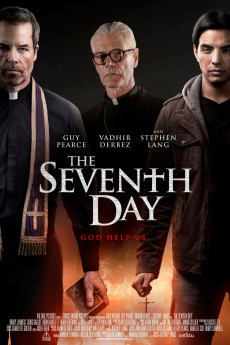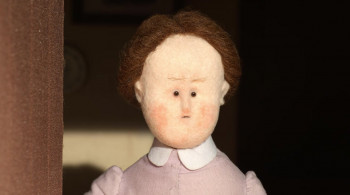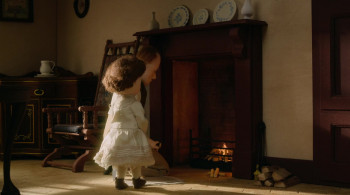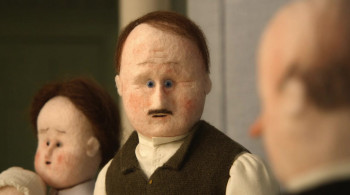It became apparent to me while watching the bugs dance that...
Netflix's three-part stop-motion animation special The House is one of the streamer's strangest and most unique releases, but the three stories work together to send a clear message which is a biting critique of consumerism. The House uses its multiple time frames and artistic styles to represent the rise of capitalism and consumerism, its modern apex, and its apocalyptic future. Through metaphor as well as direct depiction, The House both sympathetically depicts why people engage in consumerism and its ultimate flaws.
Produced by the UK's Nexus Studios, The House has alternately been described as a limited series and an anthology film, with each segment having a different director and using different types of characters. The sole connecting factor is a large house which seems to bring ruin to whoever inhabits it. The voice cast includes Enola Holmes' Helena Bonham Carter, Mia Goth, Jarvis Cocker, and Susan Wokoma.
The House has a number of surreal moments, such as a dance routine performed by termite-like "fur beetles," and its disconnected stories may seem hard to interpret at first glance. However, all three stories focus on the selling and consumption of property in increasingly absurd circumstances. These plots allow for a great deal of trenchant commentary about modern consumerism and capitalism, which is The House's true meaning.
The House Part I Real Meaning Explained: The Beginning of Consumerism
Raymond and Penelope from The House Part I
The first part of The House features human-like figures and is set at some point in the past in the English countryside. While no specific time frame is given, the clothing and decor would suggest that this is the late 19th or early 20th century. This time period, around the same time as series like The Gilded Age and Downton Abbey are set, saw the rise of consumer culture through emerging institutions like department stores, and catalogues. The House also uses this period to depict the rise of consumerism through the construction of the eponymous house.
The opening scene of Netflix's The House makes it clear why Raymond would want such a large, audacious house. His aunts and uncles judge him for his low station in life and modest home. Consumerism, in the form of a seemingly free new house, appeals to him as it did to other Victorians as a way to make up for the divides in class and fortune. After all, it was in the late 19th and early 20th centuries that the wealth gap grew exponentially, with industrialist and robber baron families gaining tremendous wealth through unchecked capitalism. But Raymond and his wife Penelope become obsessed with their material surroundings, destroying old possessions that they had an emotional attachment to.
Part I ends with a twist akin to the dark endings of Netflix's Black Mirror. Frederick and Penelope are physically transformed into the missing pieces of furniture, a chair and a set of drapes, respectively. Only their daughter Mabel, who never invested in the glamor of the house, is able to escape. The House Part 1's true meaning is that consumerism makes Raymond and Penelope prisoners of their possessions, and eventually objects themselves.
The House Part II's Real Meaning
The house showing from The House Part II
Part II of Netflix's The House skips to the modern-day, and stars an unnamed developer attempting to renovate and sell the dilapidated house. The concept of "flipping" houses is common today, and is very much in line with modern capitalism, valuing real estate and other commodities not for any use-value but purely for their ability to be resold at a higher price. This has especially been seen in recent speculation around cryptocurrency and NFTs, which has touched everything from Dune art books to video games. However, The House Part II suggests that such speculation will ultimately be unable to feed the endless hunger of consumerism. The characters in this section are depicted as rats, a reference to the "rat race" metaphor for the endless hustle and greed of modern business.
The unnamed developer, like Raymond, is a sympathetic figure. He is constantly stressed by various problems with the house, and struggles to hold together a professional appearance. But ultimately the stress caused by trying to take advantage of the housing market drives him mad. It emerges that the developer has not been making his stressful calls to a loved one, but to his dentist, a man he barely knows and who wants him to stop. Like Parasite's bleak ending, The House Part II ultimately suggests that insanity is the only possible ending to the stresses of consumerism.
In the end, instead of selling the house, the developer allows it to be taken over by a strange group of creatures who appear to be hybrids of humanoid rats and the "fur beetles" that have been driving him mad. They engage only in hedonistic behavior, trashing the house in their revels. This, too, seems to be the ultimate horizon of the consumerist desires that the developer hopes will bring make him rich: endless destructive and selfish consumption.
The House Part III's Real Meaning Explained: Climate Apocalypse
The flooded world from The House Part III
The final part of The House is set in a flooded area where the eponymous house is the only thing above water. The floodwater doesn't seem to be going away, so this is likely to be a future where climate change, a popular topic of movies like Don't Look Up, has caused a dramatic rise in the sea level. This also fits into The House's critique of capitalism and consumerism, which are often accused of being responsible for the dramatic rise in greenhouse gases.
The characters in The House Part III are depicted as cats, the natural predators of the rats in the previous part. Rosa is trying to renovate the house into an apartment building, but struggles with her lackadaisical tenants. In a normal situation, the audience's sympathies might be with Rosa. However, in a flooded, apocalyptic world, Rosa's desire to proceed as normal and make money is foolish, and her tenants' desire to relax and subsist on the land is eminently reasonable.
The House's ending suggests that consumerism will ultimately create its own downfall. In the face of climate change, continuing on buying and selling commodities is insanity. This is the same point made in apocalyptic movies like George Romero's Dawn of the Dead. Netflix's The House doesn't provide a clear solution to the problems created by capitalism and consumerism. Instead, The House's true meaning is that, like Rosa and her tenants, humanity must abandon the sinking house of consumerism and sail into the unknown.
Defo understood all this myself :)
The House
2022
Action / Animation / Comedy / Drama / Fantasy / Horror / Mystery / Thriller
The House
2022
Action / Animation / Comedy / Drama / Fantasy / Horror / Mystery / Thriller
Plot summary
Across different eras, a poor family, an anxious developer and a fed-up landlady become tied to the same mysterious house in this animated dark comedy.
Uploaded by: FREEMAN
January 14, 2022 at 12:10 PM
Director
Top cast
Tech specs
720p.WEB 1080p.WEBMovie Reviews
Capitalism, Consumerism, Dancing Beetles
Creepy, fun and heartwarming
This film contains 3 different and rather unique tales. First off I'd like to say - it's a very weird piece so it's not gonna be for everyone, and on Netflix it says 13+ but definitely don't watch it with children if you don't want to traumatise them. I'd say it's 16+ at the very least. It's not gory or violent by any means but it can be unsettling and very eerie at times, especially the first story. Now onto the review..
First: the creepy
This one is about how people tend to give themselves up for social expectations/money and the unmatiralistic purity of children. Its a rather sad tale but above everything it's an unsettling one. It's atmosphere is very eerie and to me it was visually, it looks like the distorted version of an old European cartoon, it sent chills down my spine the entire time, and though the story is kind of predictable, it managed to keep menon my toes. 8/10
Second: the fun
I couldn't quite grasp what this one was about, and to me this was the least entertaining out of the three. However it was quirky with a fun sense of humour so overall I did enjoy it. This one was interesting visually as well but it didn't stand out as much.
Side note/warning - if you have a fear of bugs you'll hate this one. 6/10
Third: the heartwarming
This story had a rather positive message about letting go of one's fear of change, taking a leap of faith instead of fixating on the past and the routines. It had a very nice/interesting atmosphere and it felt very humane to me. It was visually pleasing but nothing really unique. It's a nice closure to the previous stories, by the end it leavs the wiever with a good taste in yotheir mouth. 9/10.
















